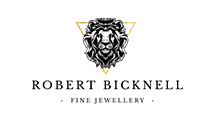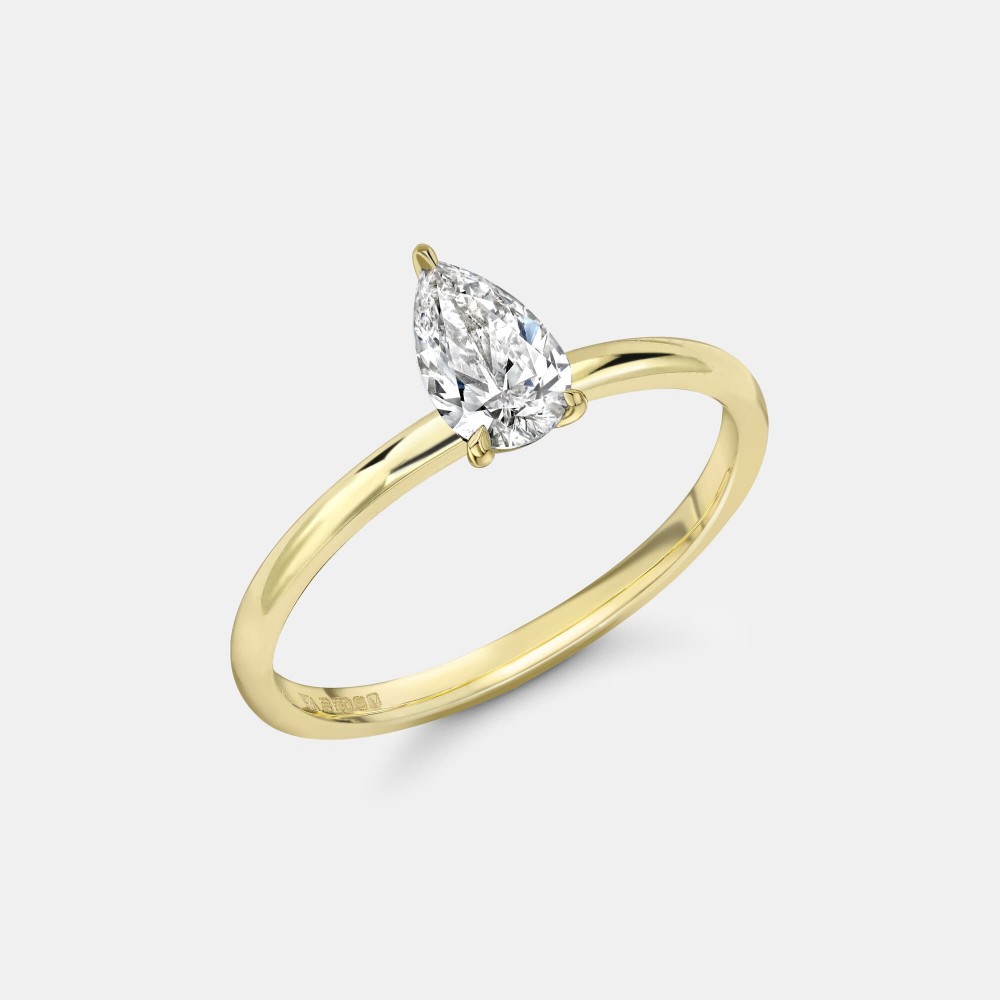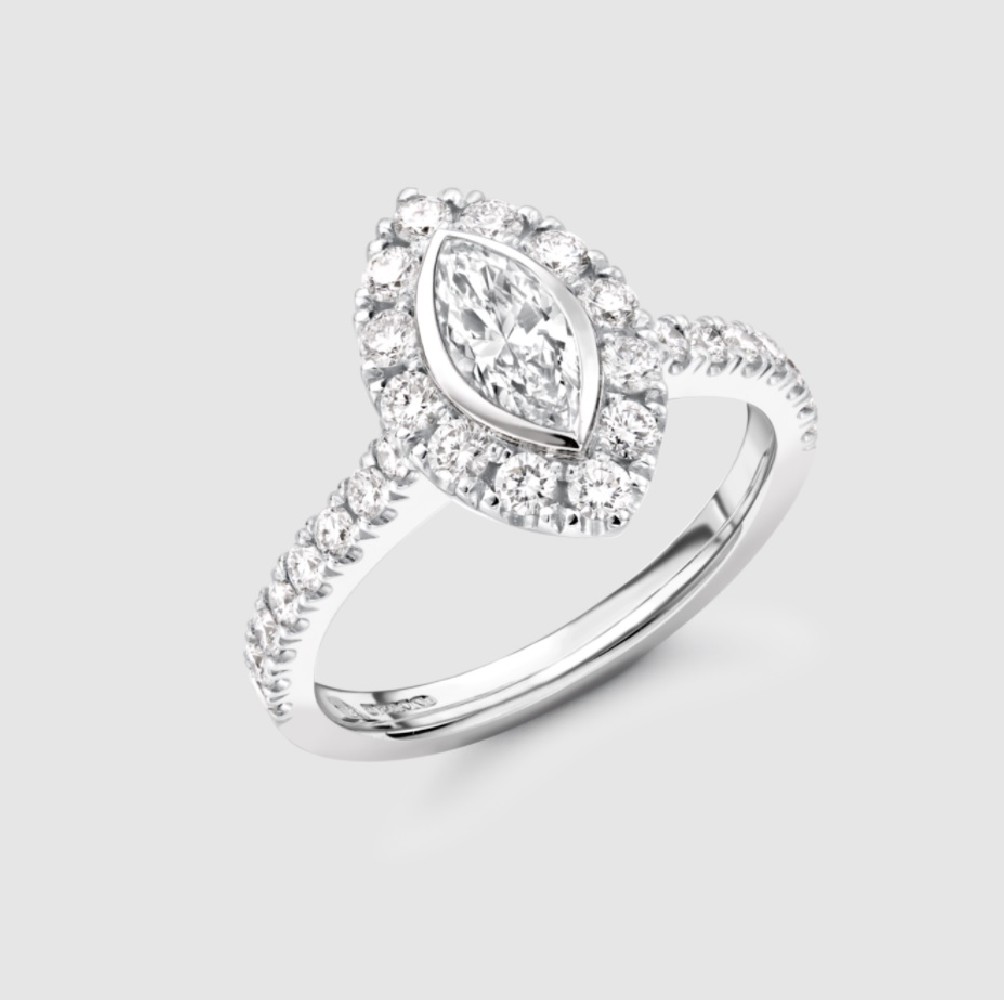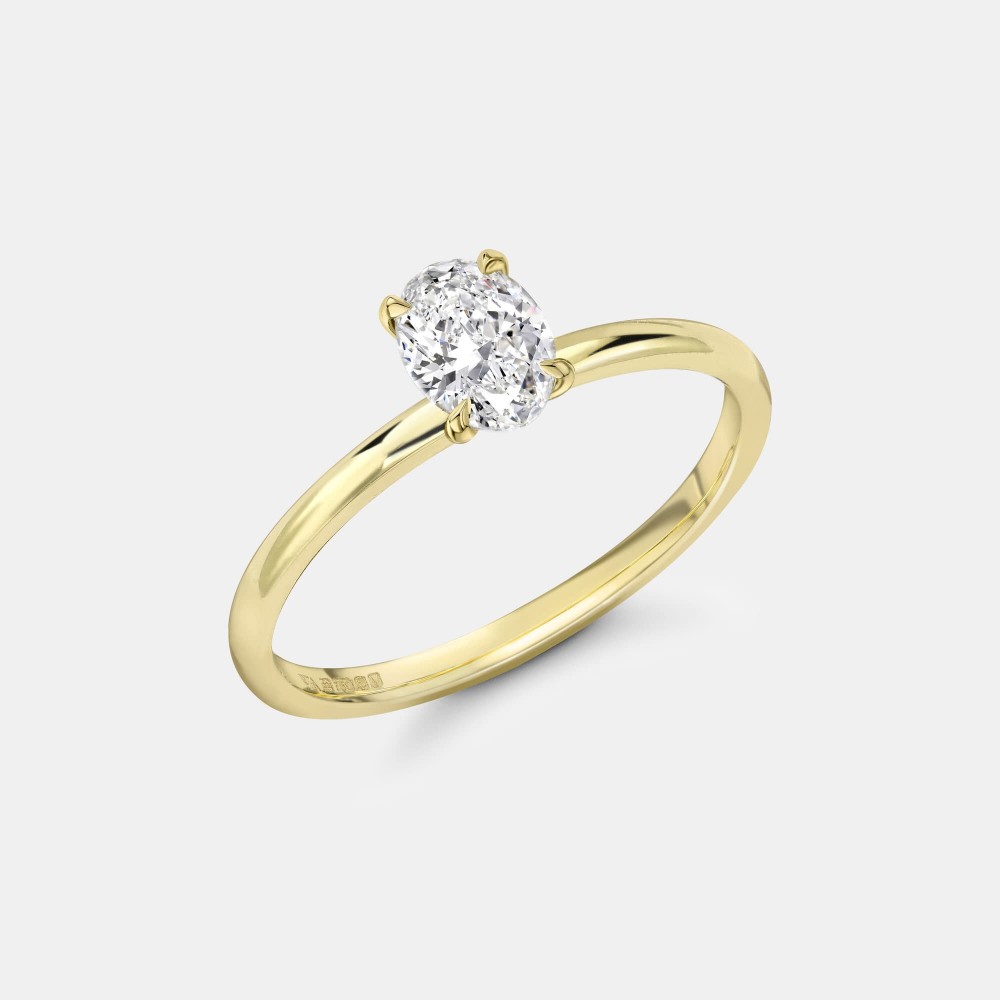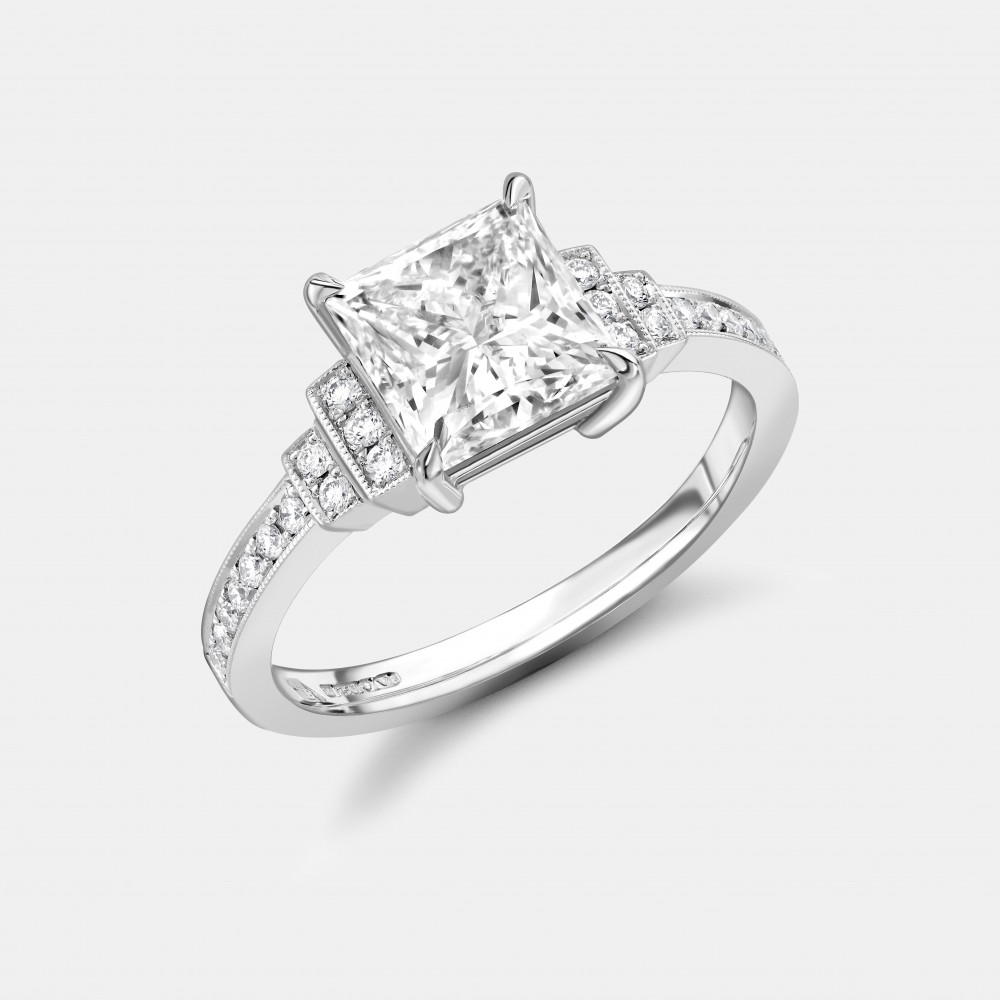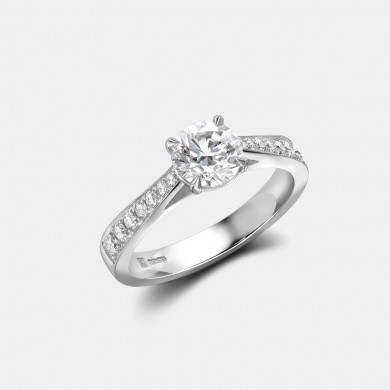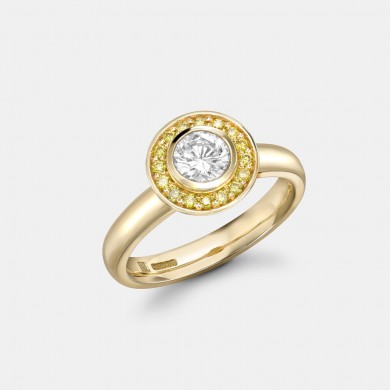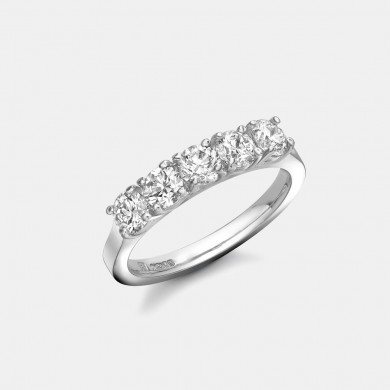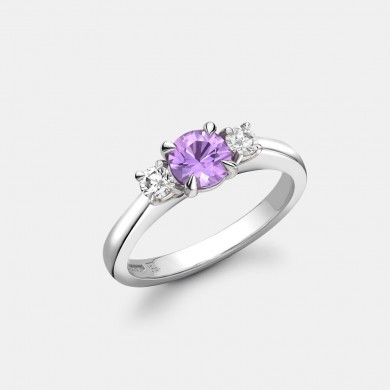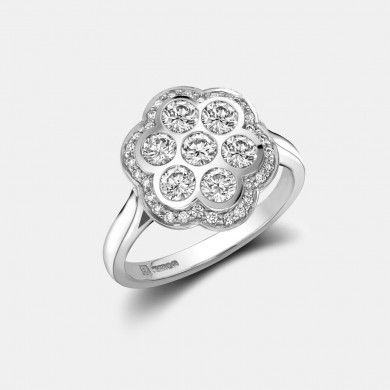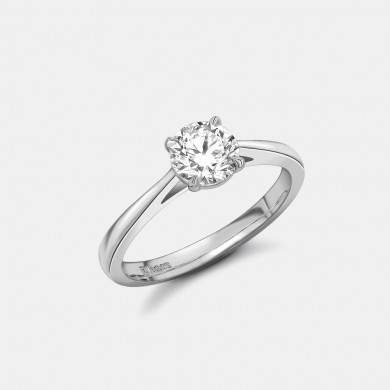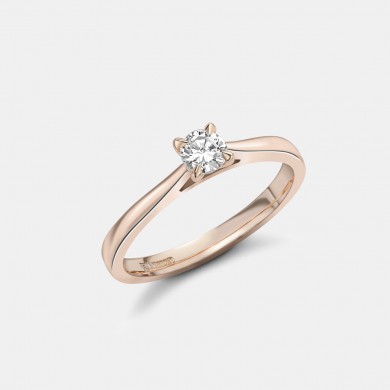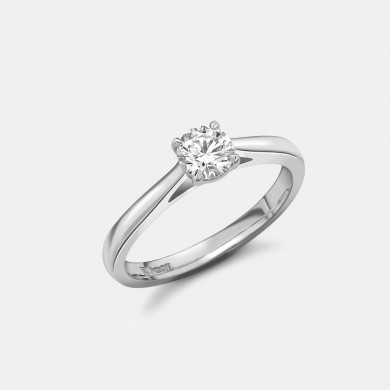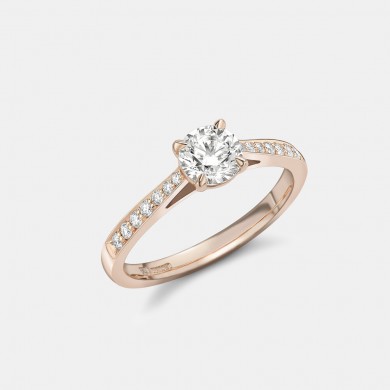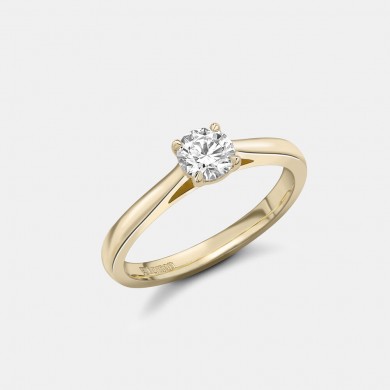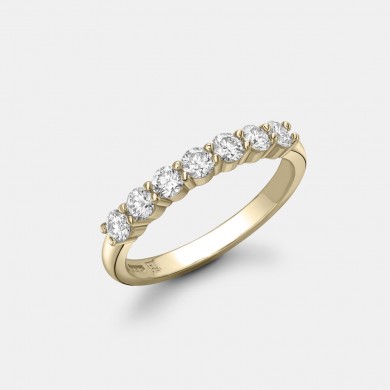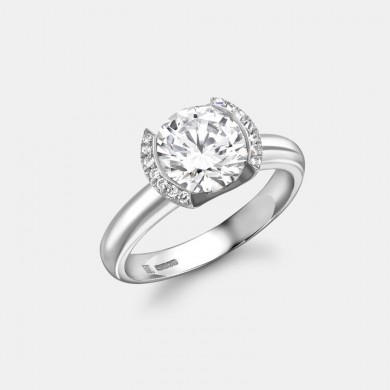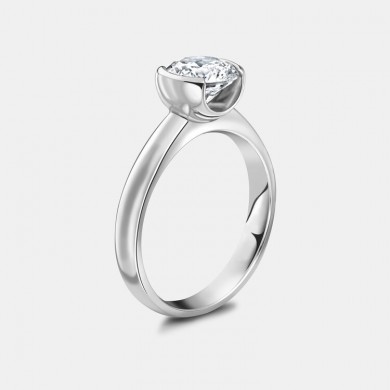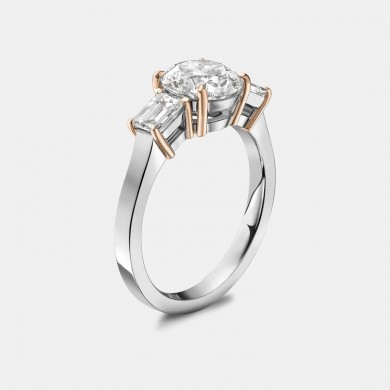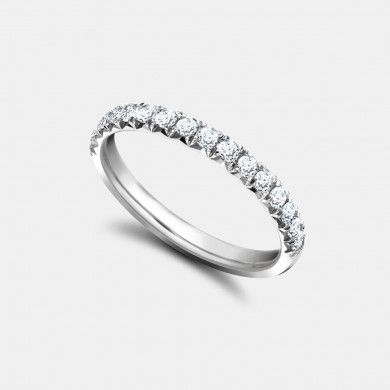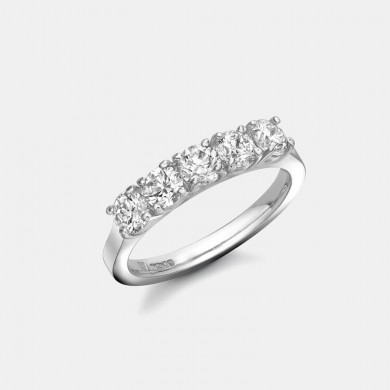Diamond Buying Guide
A diamond jewellery piece is likely to be the most expensive jewellery item you’ll ever purchase, so it’s good to be informed about what you’re actually buying, before taking the plunge. We’ve put together this handy diamond buying guide for our customers, so you can learn about those sparkly stones we all love so much!
What Are The Four Cs Of a Diamond?
You may have heard the term, ‘The Four Cs’ before but may not be sure what exactly this means. It is a universal term that was established by the Gemological Institute of America (GIA) for the grading of diamonds. The combination of the Four Cs determines a diamond’s rarity and value. The 4Cs stand for:
The cut of a diamond. This measures how well a diamond cutter has cut the facets into a stone. It will be graded accordingly within a diamond grading report with the result of Excellent, Very Good, Good, Fair or Poor.
This is the clarity of a diamond. It measures how many inclusions (natural marks inside or outside the diamond) that a diamond has.
These natural inclusions are graded using the below factors:
- ‘FL’ which stands for Internally and Externally Flawless
- 'IF’ which stands for Internally Flawless
- ‘VVS’ which stands for Very Very Slightly Included
- ‘VS’ which stands for Very Slightly Included
- ‘SI’ which stands for Slightly Included.
A diamond receives its clarity grade by being analysed by 10x magnification using a jewellers’ loupe. All diamonds include some inclusions but how much (if at all) you can see them with the naked eye, determines the diamonds value.
Here at Robert Bicknell, we use only the most breathtaking and high-quality diamonds. Most commercial grade diamonds will not have inclusions visible to the naked eye. You may be able to see some inclusions inside a diamond when magnified with a jewellers’ loupe or microscope.
This refers to the whiteness or colourlessness of a diamond. The colour is graded from D which is colourless to Z which is faintly yellow. Fancy coloured diamonds such as vivid tones of yellow, green or pink are measured on a different colour scale to white diamonds, so the two should not be confused.
This measures the weight or size of a diamond in carats. Carat is a measurement of weight, with one diamond carat equal to 200 milligrams. When determining the value of a diamond carat weight is measured against the other Cs within the scale to give a stone its value. This means two diamonds of the same carat weight can be valued at vastly different prices.
What Is The Most Important Of The Four Cs?
We think that the most important of the diamond 4Cs is cut. This is because a great cut and polish, shows off a diamond’s true potential. A diamond with an excellent cut and perfectly proportioned facets truly has a wow-factor when set into a piece of fine jewellery. Our expert team will be happy to talk to you about the Four Cs of diamonds when making your choice.
Princess Cut
Example of a Princess Cut Diamond
Emerald Cut
Example of an Emerald Cut Diamond
Cushion Cut
Example of a Cushion Cut Diamond
Marquise Cut
Example of a Marquise Cut Diamond
Pear Cut
Example of a Pear Cut Diamond
Oval Cut
Example of an Oval Cut Diamond
Round Cut
Example of a Round Cut Diamond
Heart Cut
Example of a Heart Cut Diamond
The most popular diamond cuts are generally round brilliant cut diamonds, oval shaped diamonds, pear shaped diamonds as these are timeless styles which have been used in many jewellery designs for generations.
However, the diamond market is ever changing and if an A-list celebrity is seen wearing a different style of diamond in their engagement ring, then the demand, and therefore price, for that cut of diamond usually goes up.
Here’s a selection of Robert Bicknell diamond rings using various different diamond cuts.
How Do We Source Our Diamonds?
Here at Robert Bicknell, we take ethics very seriously which is why we only used a small list of specific suppliers that we have been working with for a long time.
Our Founder, Rob chooses every diamond and gemstone himself and our suppliers know the standards that we adhere to. Rob has a huge passion for diamonds and gemstones and while he takes a great grading report into account, he also chooses diamonds and gemstones which have personality and character.
Quality is key, even down to the smallest accent stones in our designs, which are chosen for their incredible intricate details.
We have the utmost confidence in our supply chain and are happy to share the provenance of our pieces with our customers.
We Can Source Unique Diamonds For You
If there is something particular you are looking for when it comes to diamonds, the team here at Robert Bicknell can source this for you.
Maybe it’s a specific coloured diamond or a bespoke cut you’d like. Have you seen a celebrity engagement ring that you’re inspired by? We can design something similar with your choice of diamond.
If a diamond in your existing piece of jewellery has been lost or damaged, we can replace this with a matching stone. Find out more about this service.
We cater to every aspect of the diamond and jewellery industry so when it comes to diamonds, Robert Bicknell is the place! Speak to our team about a specific project.
What Are Fancy Coloured Diamonds?
As we mentioned above, fancy coloured diamonds are graded on a different scale to white diamonds. That’s because their most important factor is always colour!
For example, a fancy coloured diamond may have an unusual cut or different proportions to the typical cut of a white diamond, as this is done to elevate its vivid colour.
The most popular fancy coloured diamonds are pink, green, yellow, blue and lilac. There are also champagne diamonds which have a gentle yellowish hue and cognac diamonds which have a rich red-brown tone.
Often fancy coloured diamonds are rare, so there’s less availability on the market. But that doesn’t stop us, as we hunt high and low to source some of the most spectacular stones for your designs. Take our incredible Cushion Cut Green Diamond Ring below, which was inspired by Jennifer Lopez’s remarkable green diamond engagement ring.
What Are The Most Popular Diamond Jewellery Styles?
You’ll have seen so many classic examples of diamond jewellery styles over the years, with each brand or designer creating their version on tradition. The most common diamond jewellery styles on the market today are diamond stud earrings, diamond engagement rings, tennis bracelets, eternity rings and diamond pendants.
Whether it’s a classic piece for everyday wear, a piece for a special occasion or the perfect ring for your proposal, we have it or can create it bespoke for you. We stock a stunning selection of classic diamond jewellery styles at Robert Bicknell but if you’re looking for something more unique, we have that too!
What Are The Most Popular Diamond Engagement Ring Styles?
An engagement ring is going to be worn for life so it’s important to get it right. Diamond engagement rings are classic and stand the test of time so there’s lots of options. The most popular diamond engagement ring styles are…
Considerations When Buying Diamond Jewellery
The diamond market is vast and there’s so many sparkly treasures to choose from, so there’s a few key things to consider when buying diamond jewellery. Here’s our advice for customers…
A diamond’s value increases dramatically when it hits certain desirable carat weights such as 0.5 carat, 1 carat, 2 carats and so on. This is because commercially these sizes are coveted by customers. But did you know you can get a much cheaper diamond by choosing a stone just slightly under these benchmark sizes? A slightly smaller diamond in carat weight may not look smaller to the eye and most people certainly won’t be able to tell that you’ve opted for a 0.92ct diamond over a 1 carat. We’re always happy to advise our customers when it comes to carat weight so you can get the best diamond for your budget.
When it comes to budget, there’s alternative types of diamonds which can affect what you can and can’t afford. For example, a laboratory-grown diamond will look the same as a natural diamond of the same cut and size, but will be significantly cheaper.
A diamond’s colour will look different depending on your choice of metal. For example, if you’re hoping to have a very bright white colour, a white metal such as platinum, palladium or white gold will enhance the stones whiteness, over a warmer yellow gold which will reflect yellow tones through the facets.
The way a diamond is set in a piece of jewellery can also affect its overall look. For example, if you want your diamond to look incredibly bright and sparkly, then an open setting which allows lots of light to reflect through the diamond will only enhance its shine.
Another consideration when it comes to a diamond’s setting is wearability… a diamond ring that’s going to be worn everyday may benefit from a protective setting such as a bezel setting which completely surrounds the stone. This will help protect the diamond from knocks and scratches over time, preventing any accidents or damage to the stone.
When choosing a diamond, we recommend you pop into our store to try on some different shape options. You may have your heart set on a particulate cut, but once you’ve tried on a few options, you may find another diamond shape suits you more. Plus, who doesn’t love trying on diamond jewellery? We don’t need an excuse!
If you’re buying a diamond around 0.3 carats and above then speak to your jeweller about its grading report. Most diamonds above this size are graded with a reputable grading laboratory such as the Gemological Institute of America (GIA) or the International Gemmological Institute (IGI). This important document is confirmation of a diamond’s value and should be kept safe resale or insurance purposes.
Remodel Your Old Diamond Jewellery
A diamond is forever! So even if it’s set into an inherited, old, or unfashionable piece, we can give it new life and remodel it into something more to your taste.
Do you have a damaged or broken diamond? We also specialise in jewellery repairs and restorations. We can bring a dull diamond back to bling in no time! Find out more about the process.
Want to Know More About Buying Diamonds?
With decades of experience here at Robert Bicknell, we know our stuff when it comes to diamonds, so we’re always more-than-happy to talk our customers through their options.
